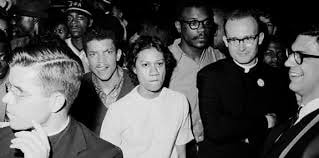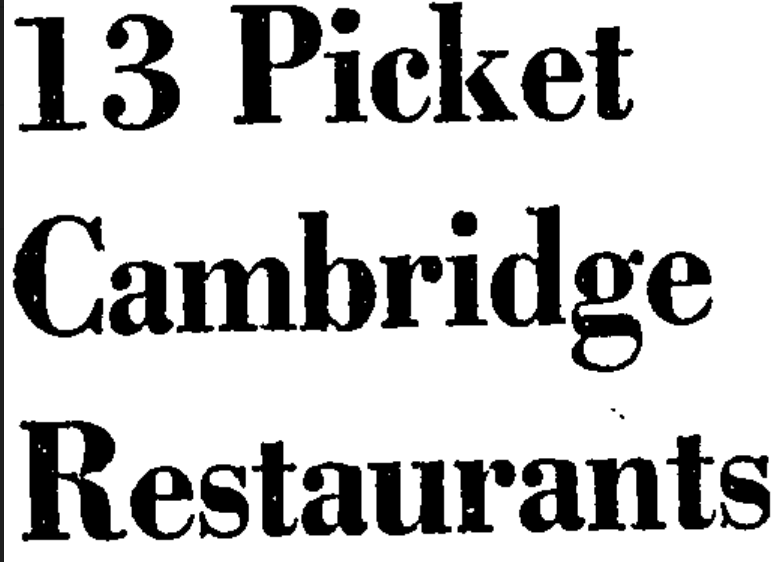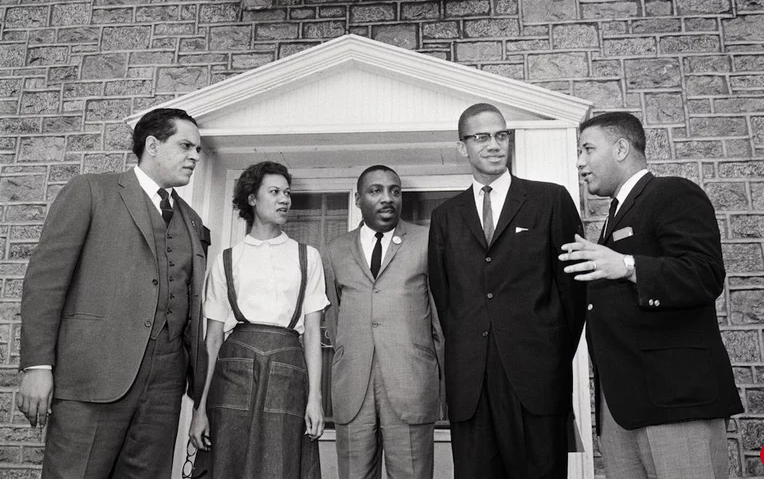
Gloria Richardson leading a Civil Rights demonstration, Francis Miller, 1964
Throughout 1961 and 1962, tensions between black and white citizens of Cambridge intensified.

Gloria Richardson leading a Civil Rights demonstration, Francis Miller, 1964
The Civic Interest Group of Baltimore (CIG) and the Congress of Racial Equality (CORE) took direct action by leading freedom rides and sit-ins. The protests began to spread across the eastern seaboard and in January of 1962, a march led by the Student Nonviolent Coordinating Committee (SNCC) in Cambridge spurred an outbreak of police brutality against the demonstrators. The mistreatment angered many black activists and the Cambridge Nonviolent Action Committee (CNAC) was formed to continue the protests that SNCC had started.
"There was something direct, something real about the way kids waged nonviolent war. This was the first time I saw a vehicle I could work with."
-Gloria Richardson, Interview with Gil Noble, 1982

The Washington Post, 1963

Washington Post, 1963
The demonstrations continued through the following months and Richardson became the leader of CNAC in March of 1963. During her first month as leader, a meeting was arranged between CNAC, CIG and local officials. The goal of the meeting was to find a compromise that could end the protests while improving the living conditions for black people in Cambridge by integrating its institutions. However, the white elected officials did not share the same views or concerns as the activists and the meeting ended in Richardson’s arrest as well as the arrest of 16 other organizers, escalating the situation to a breaking point.

Richardson with Malcom X and other leaders, Essence, 1963
Interview of Richardson by Kisha Petticolas, Jully 19th 2011